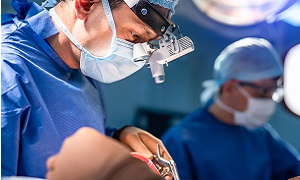Mediastinoscopy
Mediastinoscopy, a procedure which a doctor uses to look inside your mediastinum, the area behind the breastbone which lies between the lungs. The organs in this area include the heart and its vessels, the lymph nodes, the trachea, the thymus and the esophagus.
This procedure is most commonly used for detecting and staging cancer. It is also ordered to detect infection as well as to confirm the diagnosis of a few certain conditions of the respiratory organs.
Purpose
The most common purpose of this procedure is the diagnosis of non-small cell lung carcinoma. The results which you can obtain from this procedure are generally very important in tailoring care for the patient.
Few other uses for this procedure include:
- The diagnosis and removal of mediastinal masses as well as enlarged lymph nodes.
- A mediastinal mass, such as thymoma can sometimes be removed using mediastinoscopy, depending on the size
- Lymphoma can be diagnosed via mediastinoscopy along with sarcoidosis which has a similar appearance on imaging.
- A sampling of lymph nodes can help to diagnose infectious processes such as fungal infections or tuberculosis.
- Mediastinoscopy can also be used in the diagnosis and treatment of mesothelioma.
- Benign (non-cancerous) mediastinal cysts can be taken out using this procedure as well.
Preparation
Make sure you inform your doctor about any medications that you are taking, which includes vitamins, herbs or any supplements. If you have any allergies to any medicines, you need to inform him/her as well.
Your doctor will most likely advise you to stop taking blood-thinning medicines, including aspirin before the test. You will also be most likely asked to avoid taking any food or drink at least several hours before your procedure. Your doctor or nurse will most likely provide you specific instructions. Make sure that you follow them, and ask questions if you are unable to understand anything.
Procedure
The procedure is generally done on an outpatient basis. First, the patient is put to sleep with the help of general anesthesia.
After this, a tube is put into your throat and hooked up to a breathing machine while the procedure is being done. A small cut is made above your breastbone. Then the mediastinoscope is moved slowly into the mediastinum. Any abnormal lymph nodes or areas which are seen through the camera are going to be removed or biopsied with the cutting tool and then they will be sent to the lab for checking. Then the mediastinoscope is removed and the cuts are closed. Once the procedure is complete, you will be removed from the breathing machine and be woken up gently.
This procedure generally takes around 60 minutes, but depending on what is being done, it can sometimes even take more than that.
After the procedure
After the procedure is done, you will be monitored closely to make sure that you don’t have any problems. As your anesthesia wears off, you might feel a bit groggy or confused for some time. It is likely that your mouth and throat will be numb for a while. You can only take food or drink after this numbness goes away.
However, after this numbness is gone, you might develop a sore throat, cough, or hoarseness till the next day or so. You might also experience some pain or numbness in the site where the cuts were made.
If it was performed as an outpatient procedure, you should most likely able to go home after a few hours, but you will require a ride home because of the medicines or anesthesia that you received. Some centers will generally not discharge people to go home in a cab and therefore you might need someone to drive you home. If this is a problem, you can talk with your healthcare provider, about any other resources available for helping you get home.
Your healthcare team will give you instructions on what you will be able to do or won’t be able to, in the next few hours after the procedure.
If biopsies were done as a part of this procedure, then the results should be ready within a few days, although the results of some tests on the biopsy samples may take longer. Generally, you might need to follow up with your doctor after the procedure to get your results.
Risks
People who undergo a mediastinoscopy generally don’t develop any complications.
Sometimes the mediastinoscope can cause temporary injury to a nerve, which might lead to hoarseness. Sometimes this might even be permanent.
In some rare cases, bleeding complications might require a transfusion or larger chest surgery. Air leaks from the lung might also occur and can require additional treatment. Generally, this can involve putting in a drainage tube between your ribs for a few days.
In very rare cases, mediastinoscopy might cause a collapsed lung or damage to the gullet.
You should inform your doctor immediately if you experience any of the following symptoms:
- Bleeding from the stitches.
- Swelling in your neck.
- Shortness of breath.
- Difficulty swallowing.
- A high temperature (fever)
- Severe chest pain.
- Hoarseness of your voice lasting more than a few days which continues to worsen.


